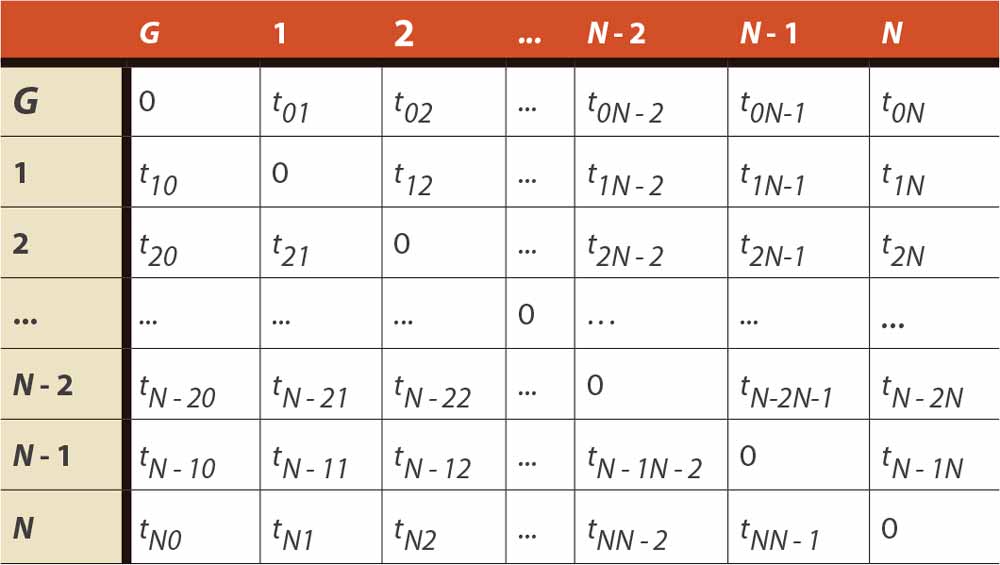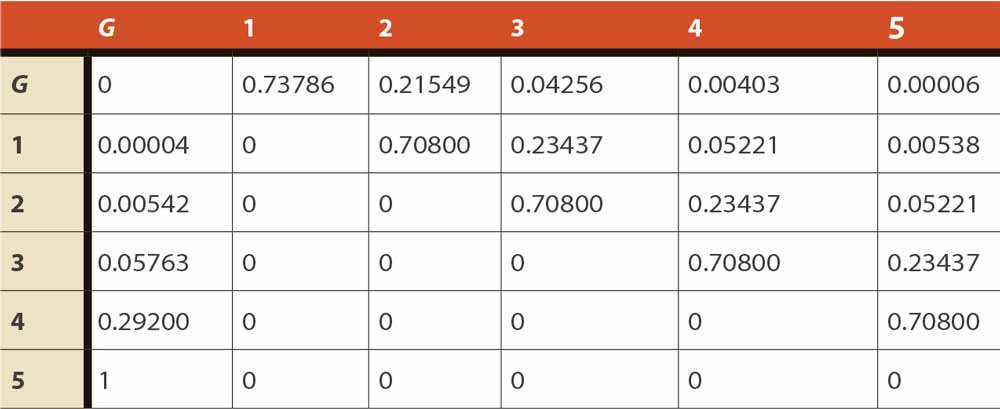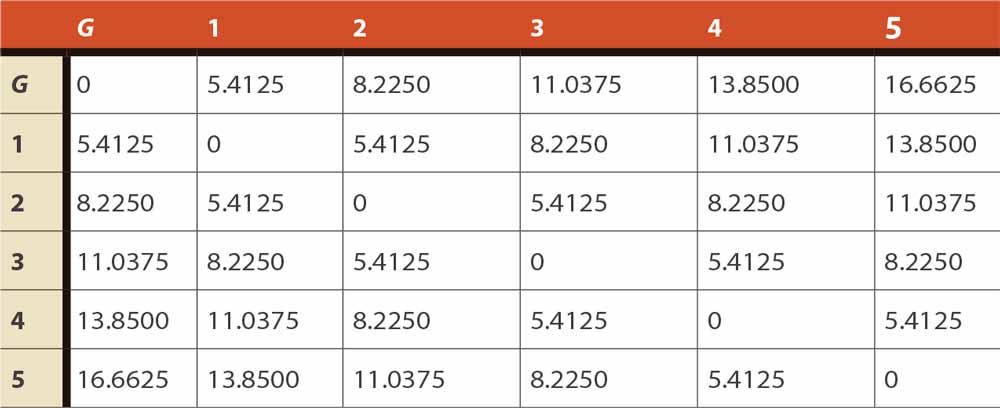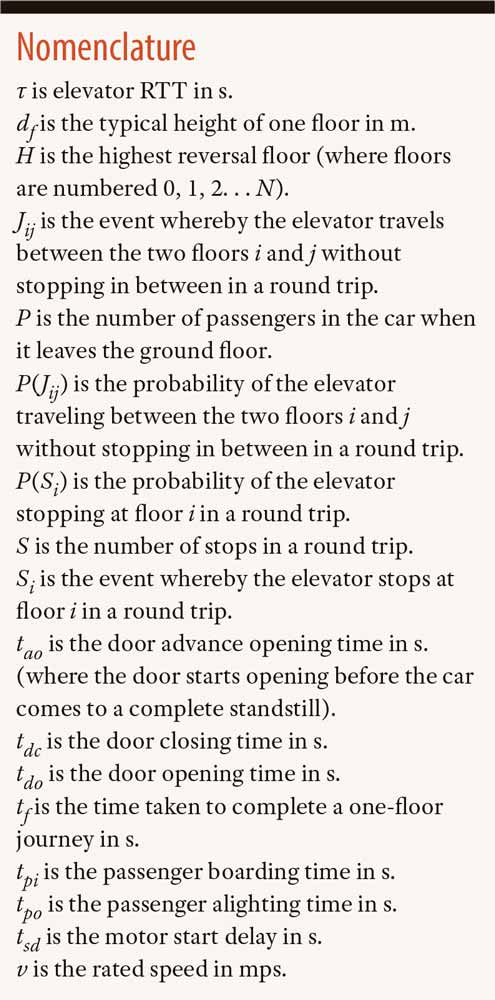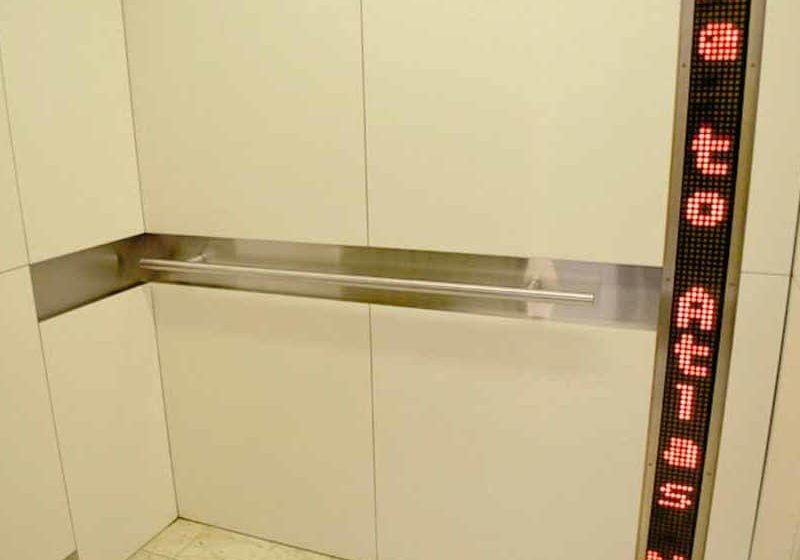Deriving Elevator RTT under Incoming Traffic Conditions and a Single Entrance
Jan 1, 2014
by Lutfi Al-Sharif, Hasan Algzawi and Ahmad Hammoudeh
RTT is the basis for designing elevator systems. There are several different methods (both analytical and numerical) for calculating it. As a building’s traffic conditions become more complicated, analytical methods become intractable. Numerical methods offer an attractive alternative for calculating RTT, which is the time taken by the elevator to complete a full round trip, during which it picks up passengers from the main entrance, delivers them to their destinations in the building and returns to the main entrance.
The use of the MCMC method is a viable alternative to Monte Carlo simulation, which has been used to find RTT. This article derives the formulae necessary to build the transition-probability matrix for the elevator during a round trip under incoming traffic conditions and a single entrance. It then provides a numerical example illustrating the practical use of the method to evaluate RTT.
Evaluating RTT is critical to the design of elevator traffic systems. It can be used to find the required number of elevators in a building, based on quantitative and qualitative user requirements.[1] It may be achieved using analytical-equation-based[2 & 3] or numerical methods.[4] Analytical methods are restricted in their scope of application, as they cannot deal with cases where the top speed is not attained in one floor journey and where floor heights are not equal, although some work has been done in that area.[5] The advantage of numerical methods is that they can be applied under any of the special cases, such as top speed not attained in one floor journey, unequal floor heights, unequal floor populations and multiple entrances. The only numerical method currently used in evaluating RTT is the Monte Carlo method.[4]
This article also introduces a methodology for deriving the transition probability matrix. A step-by-step guide to using the MCMC method in evaluating RTT is also presented, along with a numerical example of said evaluation. The MCMC method introduced here is restricted to the case of a single entrance building. The case of multiple entrances is fully addressed in “Evaluating the Elevator Round Trip Time for Multiple Entrances and Incoming Traffic Conditions using Markov Chain Monte Carlo” by Lutfi Al-Sharif and Ahmad Hammoudeh (www.inderscience.com/info/ingeneral/forthcoming.php?jcode=ijise).
The Transition Probability Matrix
In order to use the MCMC method for evaluating the round-trip time, it is first necessary to derive the transition probability matrix.[6] Each element in the transition probability matrix provides a chance the elevator will move to a floor j from floor i, given that the elevator is currently on floor i. This is shown below:

A general format for the matrix is shown in Table 1. It can be seen that the diagonal is zero, as the elevator cannot stay on the same floor. As the traffic is incoming, the traffic cannot move to a floor below it, except to return to the ground floor. The upper triangle of the matrix represents the probabilities of the elevator moving to an upper floor. The first column represents the probability of returning to the ground floor. Taking the general expression for each cell and expanding it gives:

Thus, the transition probability from floors i to j is equal to the probability of not stopping at any floors between those two, stopping at floor i, divided by the probability of stopping at floor i in a round trip. But, it is worth noting that the event “journey from floor i to j in a round trip” is a subset of the event “stopping at floor i in a round trip,” as, by definition, in order for a journey from i to j to take place, the elevator must first stop at floor i. This is shown in:

But, if an event A is a subset of another event B, their intersection is event A. So the probability in Equation 2 can be simplified as shown below:

Substituting Equation 4 in Equation 2 gives the following important result:
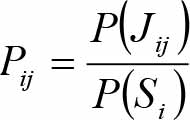
Thus, the values in each row must be divided by the probability of stopping at a floor. The ground floor is the only entrance. Thus, by definition, the elevator has to stop at that floor to pick the passengers (P) up. Thus, the probability of the elevator stopping at this floor in one round trip is 1:

The first column in Table 2 represents the probability of a certain floor being the highest reversal floor in a round trip, given that the elevator stopped at that floor. This is shown below:

This is equal to the probability of the ith floor being the highest reversal floor and a stop at the ith floor, divided by the probability of stopping at the ith floor in a round trip. But, it is worth noting that the event “the ith floor being the highest reversal floor” is a subset of the event “stopping at the ith floor in a round trip,” as, in order for the ith floor to be the highest reversal floor (by definition), the elevator must stop at the ith floor to start with. This is shown below:

But, if an event A is a subset of another event B, their intersection is event A. So, the probability in Equation 7 can be simplified as shown in Equation 9:

Substituting Equation 9 in Equation 7 gives the important result:

Thus, the elements in the first column can be derived by dividing the probability of a floor being the highest reversal floor, divided by the probability of stopping at that floor. The final modified transition probability matrix is shown in Table 2. In order to derive the transition probability matrix, it is necessary to have formulae for the probability of the following events:
- The probability of a journey between two floors without stopping at the intermediate floors between
- The probability of a floor being the highest reversal floor
- The probability of stopping at a floor
These three formulae are derived in the next section.
Equations
It has been shown that the probability of a journey taking place between two floors i and j (without stopping at any floor between) in a round trip is given by the following expression shown in Equation 11 below:[5]

For the special case in which the elevator starts from the ground floor (i.e., the single entrance), Equation 11 is reduced to the following special-case equation:[5]

The probability of the elevator stopping at a floor i during a round trip depends on the population on that floor and the number of passengers boarding the car, as shown below:[5]

The ground floor is the only entrance. Thus, by definition, the elevator has to stop at that floor in order to pick passengers (P) up. Thus, the probability of the elevator stopping at this floor in one round trip is 1.

As can be seen in the transition probability matrix (for a single-entrance arrangement), the first column represents the probability that a certain floor be the highest reversal floor, given that a stop has taken place on that floor during a round trip. The formula for the probability of a floor being the highest reversal floor is shown below:[5]

It is also necessary to calculate the travel time between floors. This time between any two floors i and j separated by a distance (d), with a rated speed of v, rated acceleration (a) and rated jerk (j) can be calculated as shown in Equations 16-18 for the three different conditions (rated speed attained, rated speed not attained but rated acceleration attained, and rated speed not attained and rated acceleration not attained, respectively):[7]
Rated speed attained: if:

Rated speed not attained but rated acceleration attained: if , then

Neither rated speed nor rated acceleration attained:
if , then

This produces a two-dimensional matrix that shows the time required to travel between floors i and j. A representation of such a matrix is shown in Table 3. As can be seen, the diagonal is zero, as no time is required to move to the same floor. It can also be seen that the upper triangle of the matrix above the diagonal is a mirror image of the lower triangle below the diagonal.
Calculating RTT
The following is an overview of the steps to take in making a RTT evaluation using the Markov Chain Monte Carlo method:
- Develop the kinematics matrix.
- Develop the transition probability matrix.
- Extract the probability density function (PDF) for each floor of the building from the corresponding row in the transition probability matrix.
- Convert each PDF obtained in step 3 into a cumulative distribution function (CDF).
- Assuming that the starting position for the elevator is the main entrance (floor G, or 0), draw a random sample from the CDF produced from the first row of the transition probability matrix. This will provide the elevator’s next destination.
- Using the row that corresponds to the next destination, use the CDF of that row to generate the next destination.
- Repeat step 6 until the elevator returns to the ground floor. This forms a complete round trip.
- Using the kinematics matrix developed in step 1, calculate the travel time component of the round trip.
- Based on the number of stops in the journey found in step 7, calculate the door time component of the round trip.
- Based on the number of passengers on which the transition probability matrix was developed, calculate the passenger transition component of the round trip.
- The round trip is the sum of the three terms in steps 8, 9 and 10.
- Repeat steps 5-11 in a certain number of trials (e.g., 10,000), then take the average of all trials, thus obtaining the RTT.
Numerical Example
A building has five floors (N) above the main entrance (ground floor). The elevator car fills up with six passengers; thus, P = 6 at the ground floor. The building has equal floor height: df = 4.5 m. The door opening time (tdo) is 2 s., and the door closing time (tdc) is 3 s. The passenger-transfer time into the elevator (tpi) is 1.2 s.; to exit the elevator (tpo), it is 1.2 s. The rated speed (v) is 1.6 ms-1; the rated acceleration (a) is 1 ms-2; the rated jerk (j) is 1 ms-3.
In the example’s transition probability matrix (Table 4), as expected, the sum of the elements in any row is 1, the diagonal is zero, and the lower triangle is zero (except for the first column). The PDF and CDF for each row are generated and used to carry out random sampling to generate a full round trip. Random numbers are generated and used to generate the movement of the elevator in the building as follows:
- Random() = 0.244: 0 to 1
- Random() = 0.746: 1 to 3
- Random() = 0.796: 3 to 5
- From 5 to 0
Thus, the full journey becomes 0 to 1, 1 to 3, 3 to 5, then 5 to 0. It is necessary to find the kinematic matrix to calculate the first term of the RTT. This represents the time required for the elevator to travel between any two floors, starting at rated speed, acceleration and jerk. These times can be calculated using Equations 16-18. These are shown in Table 5 for this building and its elevator’s kinematic parameters.
The RTT is comprised of three components. The first of these is the travel time:

The second term is the door time. This can be calculated by multiplying the number of stops during the journey by the door opening and closing time. The number of stops in this case is four (stops at 0, 1, 3 and 5):

The third and final term in the RTT equation represents the passenger boarding and alighting time and is denoted by τp. This is easy to calculate by multiplying the number of passengers by the sum of the boarding and alighting time per passenger:

Adding all three RTT terms, gives the RTT’s first trial:

Repeating this procedure 10,000 times gives a final RTT value of 76.3231 s. The exact value using the analytical equation is 76.4031 s.
Conclusion
A clear set of steps has been outlined for evaluating the RTT value using the MCMC method. The equations for developing the transition probability matrix of the elevator movements during a round trip have been derived. A numerical practical example has been given illustrating the use of the method to evaluate the RTT for one trial. The method is particularly powerful in cases where analytical equations do not exist for the special building conditions, such as when the top speed is not attained in one floor trip and when there are unequal floor heights.
References
[1] Lutfi Al-Sharif, Ahmad M. Abu Alqumsan & Osama F. Abdel Aal, “Automated optimal design methodology of elevator systems using rules and graphical methods (the HARint plane),” Building Services Engineering Research and Technology, August 2013; vol. 34, 3: p. 275-293 (first published on April 12, 2012).
[2] G.C. Barney, Elevator Traffic Handbook: Theory and Practice Spon Press, London and New York (2003).
[3] The Chartered Institute of Building Services Engineers (CIBSE), CIBSE Guide D: Transportation Systems in Buildings, Fourth Edition, (2010).
[4] Lutfi Al-Sharif, Hussam Dahyat & Laith Al-Kurdi, “The Use of Monte Carlo Simulation in the Calculation of the Elevator Round Trip Time under Up-Peak Conditions”, Building Services Engineering Research and Technology, volume 33, issue 3 (2012), p. 319–338.
[5] Lutfi Al-Sharif, Ahmad M. Abu Alqumsan & Rasha Khaleel, “Derivation of a Universal Elevator Round Trip Time Formula under Incoming Traffic,” Building Services Engineering Research and Technology 0143624413481685 (first published on June 13, 2013 as doi:10.1177/0143624413481685).
[6] Hamdy A. Taha, Operations Research: An Introduction, Ninth (International) Edition, Pearson (2011).
[7] Richard D. Peters, “Ideal Lift Kinematics: Derivation of Formulae for the Equations of Motion of a Lift,” International Journal of Elevator Engineers, 1996.
Get more of Elevator World. Sign up for our free e-newsletter.


